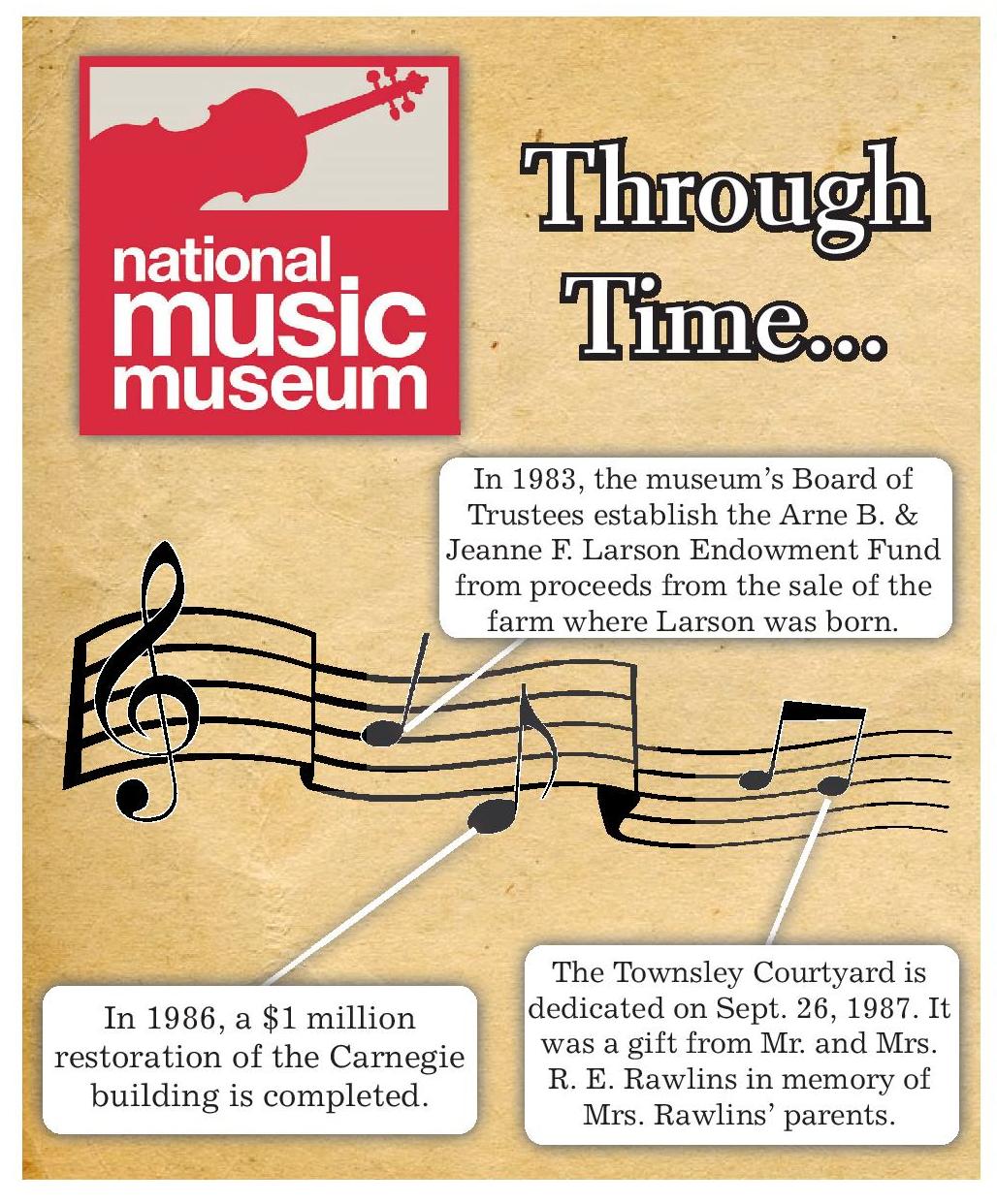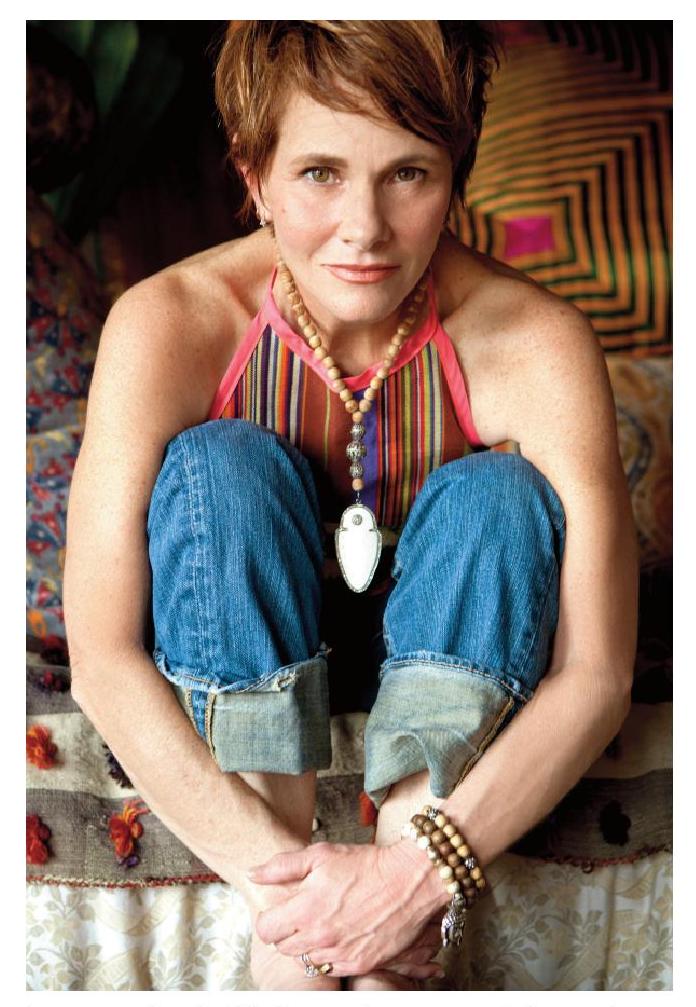4







November 22, 2013 www.plaintalk.net
B4 Plain Talk: Heritage Edition
Shawn Colvin: A story of music and survival
By David Lias
david.lias@plaintalk.net
Shawn Colvin admitted
before a crowd of local
media Saturday, Dec. 5,
1998, that returning to
Vermillion after more than
a 25-year absence had
some frightening aspects.
“It’s pretty bizarre . . . I
have some very vivid
memories, though,” she
said at a press conference
shortly before she
performed on stage at
USD’s Slagle Auditorium in
a concert simply known as
“An Evening with Shawn
Colvin.”
She admitted at the time
that it’s hard to bridge the
distance from when she
moved from Vermillion at
age 12, to today. Some
things, though, she’ll never
forget.
“I certainly remember
the seasons being very
discernable,” Colvin said. “I
remember Main Street
really pretty well, and I’ve
always asked about the
places I remember really
well – none of which are
there anymore.”
She remembers car trips
to Mt. Vernon, near
Mitchell, to visit her
grandmother, and family
vacations in the Black
Hills.
During the return to her
childhood community
nearly 15 years ago, she
talked about plans to tour
Canby Street the next day,
where the Colvin family
once lived, and take a drive
on Valley View Drive,
where her grandparents
used to live on a bluff.
“Somehow or another I
remember you could take
your bike to where that hill
went down and ride like a
bat out of hell,” she said.
Colvin picked up her
first guitar at the age of 10.
At age 12, she moved from
Vermillion with her family
to Canada, and her love of
music continued to grow.
She left college to
perform and compose on a
full-time basis, living in
Texas, San Francisco, New
York and Boston.
Her first album, “Steady
On,” contained 10 original
songs including “Shotgun
Down the Avalanche,” “Cry
Like an Angel” and
“Diamond in the Rough.”
It was awarded a Grammy
for Best Contemporary
Folk Recording.
A second album, “Fat
Cat,” released in 1993,
received two Grammy
nominations. Colvin has
also kept busy with film
projects and shortly before
her visit to Vermillion in
1998 took on perhaps her
most important role –
motherhood.
Growing up in a small
town like Vermillion, she
admits, was both a blessing
and a curse.
“I think it took me a
long time to feel like I
could do artistic work,
because it’s not really
encouraged in a small
midwestern town,” Colvin
said. “On the other side of
it, having come from a
place like Vermillion, I’m
really grateful for what I
have. I’ve often thought
that coming from this
particular landscape has
given me a lot of
imagination.”
These days, Colvin is
crisscrossing the country.
This month alone she will
have performed in Texas,
Louisiana, Florida,
Mississippi, and New York,
on what has been dubbed a
fall duo tour with Mary
Chapin Carpenter.
The upcoming holidays
will provide very little
down time for her, as
Colvin begins, according to
her web page, her
Transatlantic Sessions
debut, joining the 2014
tour of the UK, which kicks
off with two performances
at the Glasgow Royal
Concert Hall for the Celtic
Connections festival, in
January and February.
Also performing in the
Transatlantic Sessions tour
are Sarah Jarosz,
Transatlantic regulars
Darrell Scott and Tim
O’Brien, and Scottish vocal
ambassadors Julie Fowlis
and Kris Drever. The allstar house band, along with
musical directors Aly Bain
and Jerry Douglas, Danny
Thompson, Phil
Cunningham, Russ
Barenberg, Mike
McGoldrick, John Doyle,
John McCusker, James
Mackintosh and Donald
Shaw.
A survivor
In 1991 Colvin’s album,
“Steady On,” received a
Grammy as “Best
Contemporary Folk
Album.”
In 1997 – the year
before she returned to
Vermillion to perform at
the University of South
Dakota, Colvin received
her two Grammys – one
for Record of the Year –
“Sunny Came Home,” and
for Song of the Year –
“Sunny Came Home.”
From all appearances
during her return to
Vermillion in the late
1990s, Colvin is a typical
product of the Midwest –
happy, almost seeming
carefree at that time,
enjoying being a new
mother and riding the
wave of a music career that
included hit albums, hit
songs and three Grammy
awards.
Despite the commercial
success, offstage Colvin was
juggling a new marriage
and the birth of her
daughter. She released a
rushed album of Christmas
songs and lullabies, but no
true follow-up studio
album for nearly five years.
“When you know part
of the industry thinks of
you as a one-hit wonder,
that’s painful,” Colvin told
Andy Langer in a story that
appeared in the June 9,
2012 New York Times. “For
a long time, I felt like I
failed myself, my career
and my record company. I
took a break. And that’s
not what you do after a
huge record and a No. 1
hit. I was 42 years old, and
motherhood was
something I wanted. I paid
a price. And then it was
kind of a perfect storm –
my mood problems, the
postpartum depression,
and the pressure of
following up a huge
record.”
Colvin chronicles those
struggles in a memoir,
“Diamond in the Rough,”
which was published in
June 2012 to coincide with
the release of her first new
studio album in six years.
It’s a story of survival –
she characterizes as “a
stick-with-it, keeppushing-through survival
story.” What’s there to
survive? Anorexia. Clinical
depression. Addiction.
Motherhood. Career crises.
Lots of men.
As recently as 2008,
Colvin’s feelings of despair
were so severe that she
considered suicide and
checked herself into a
psychiatric facility in the
midst of a nervous
breakdown.
Today, Colvin, 57, lives
in Austin, TX, the divorced
mother of a teenaged
daughter. In a story written
by Brad Buchholz that
appeared in the June 20,
2012 Austin AmericanStatesman, he notes that,
according to Colvin’s book,
the musician with
Vermillion roots has been
battling depression and
sorrow for more than four
decades. The tentative,
open-ended conclusion of
her memoir raises the
question: “Are you OK?”
According to Buchholz’s
story, her reply to that
inquiry is, “I’m really OK.
There’s more resolution
now than there was when I
finished the book. I’d come
out (of depression) and
was feeling better. But I still
had what I’d call ‘sinking.’
Not a hideous descent into
a black hole. But just what
I would call ‘a sinking.’ You
Through
Time...
know, several times a day,
when things are
overwhelming. It’s a
paralysis, a bit of paralysis,
and dread.
“But I've found a great
doctor, a
psychopharmacologist
who’s smart and has a
heart. I’m lucky, lucky,
lucky. She’s fixed it. I mean:
I’m good. I’m kind of
bulletproof.”
In her book’s prologue,
Colvin writes, “Who
doesn’t have a little
pyromania in them?
There’s something thrilling
about making fire, it’s
primal, right? As a kid in
rural South Dakota I
remember wandering one
day onto a vast, grassy field
wielding a pack of matches
from my father’s pipe
drawer with the express
purpose of burning
something. I made little
piles of grass, set them
ablaze, and stomped them
out. Eventually, I couldn’t
resist making multiple piles
and my little fires, with the
help of some wind,
suddenly turned into one
big one. I stomped for all I
was worth, but it was of no
use, I had me a fire, and I
went running to the house
to tell my father; swearing
with big wide eyes that I
had just found it. I didn’t
know how it happened. He
didn’t believe me, of
course, but as parents will
do at times when they
know you’ve just gone
through a rite of passage,
like saying the dog ate your
homework, my dad let it go
and put the fire out.
“Having learned
nothing from this
experience, I went on as an
adult to continue setting
fires. All my fires backfired.
But Sunny’s didn’t. Sunny
is the arsonist in what is
probably my best-known
song, “Sunny Came
Home,” and I’ve been asked
more than a few times
what she was building in
her kitchen with her tools,
what did she set fire to, and
why? First of all, Sunny is
me. Everything I write is
through me, through my
perspective. Both Sunny
and I went through a lot, I
suppose, and came out the
other side (at least I like to
think Sunny was
acquitted). She may have
gone overboard a tad, but
we are both of us
survivors.”
The stage is home
When Colvin stepped
onto the stage of Slagle
(now Aalf ’s Auditorium) in
on the USD campus in
December 1998, she knew
by the warm response of
the large audience that she
had returned home.
It didn’t matter that
Vermillion had changed a
great deal since her family
moved away from here
when she was 12 years old.
One of the first things
she told the audience after
performing her first song
was of the great
anticipation she felt by
performing in the town
where many of her dearest
childhood memories were
formed.
“I do this professionally,
but tonight I feel like an
amateur,” she said, joking
with the audience, “I’m
nervous . . . I am standing
naked before you now . . .
and the Queen of England
and Sting in Carnegie
Hall.”
Above the laughter, an
audience member near the
front row shouted loud
enough for Colvin to hear,
“We love you Shawn.”
From that moment on,
her performance just took
off. Standing alone on the
stage, with no musical
accompaniment other than
her guitar, she would string
a popular song with one
that hadn't received as
much exposure to the
public.
And then, she would
stop briefly to talk to her
audience, many whom who
had something in common
with her – they were living
in Vermillion the same
time that she did.
She noted how the
theme of a lot of
songwriters is to “get out”
of the small towns or dead
end jobs that once were
part of their youth.
“I think it’s very
interesting, because we ‘get
out,’ and then we write very
nostalgically about where
we came from,” Colvin
said.
Nostalgia, she said,
played an important role in
her first trip to Vermillion
since moving away from
here as a child.
Colvin admitted during
her 1998 performance that
her stroll down memory
lane was difficult. Many of
Vermillion’s institutions
that made a great
impression on her during
her youth aren’t around
any more.
“Here’s some of the
places I was looking
forward to going to,” she
said. “Some of you will
remember these places,
some of you won’t. I really
want to go to The Cavalier.
Chocolate ice cream every
Thursday. It’s gone.”
n COLVIN, Page B11
KNUTSON
FAMILY DENTISTRY
Dr. Richard Knutson
Dr. Matthew Knutson
Dental Excellence for Children & Adults
Proudly Supporting Clay
County’s Rich Musical
Heritage
Cosmetic • Implants
General Practice •Single Visit Crowns
Braces For Adults & Children •Invisalign
HOURS:
Monday – Friday, 8:30 – 5:30
1714 East Cherry Street, Vermillion
In 1983, the museum’s Board of
Trustees establish the Arne B. &
Jeanne F. Larson Endowment Fund
from proceeds from the sale of the
farm where Larson was born.
In 1986, a $1 million
restoration of the Carnegie
building is completed.
The Townsley Courtyard is
dedicated on Sept. 26, 1987. It
was a gift from Mr. and Mrs.
R. E. Rawlins in memory of
Mrs. Rawlins’ parents.
605.624.6291




















 Previous Page
Previous Page






